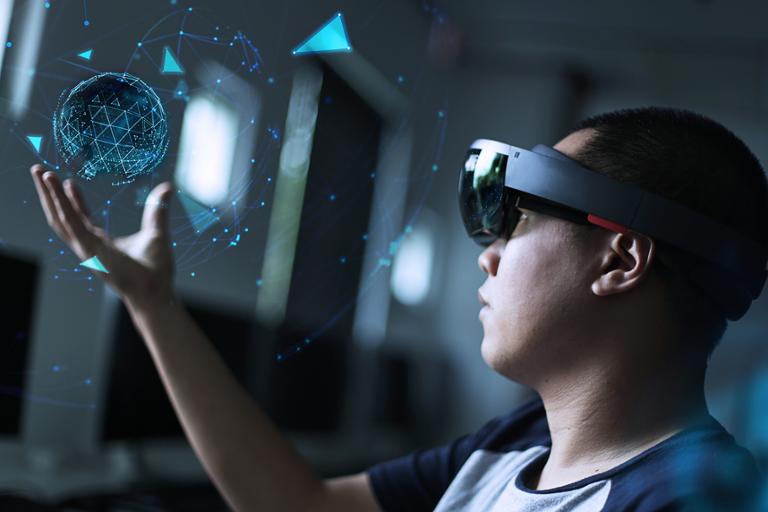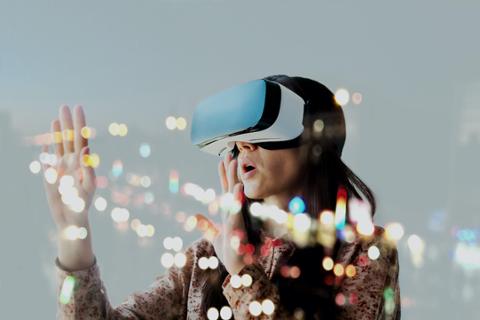
Augmented reality (AR) is poised to make a big impact in 2022. Apple’s AR headset could land next year (if you believe the rumors), along with hardware from other companies. Meanwhile, mobile apps and games continue to take advantage of this technology, which inserts virtual characters into your “real world” view—chances are you’ve caught virtual Pokémon or digitally placed furniture in your living room with little more than an iPhone or Android handset.
Despite these advances, many are left wondering why we need a more immersive AR experience. It’s cool, but is it necessary? Does a headset make game-playing more meaningful? Do you need a more immersive virtual-interior-designer experience? Is it even safe for people everywhere to have an AR headset strapped to their faces?
We spoke with several technologists to find out what they think the impact of AR might be if we do, in fact, see companies like Apple roll out proper AR headsets in 2022.
Is Augmented Reality A Paradigm Shift or a Fad?
“Augmented Reality (AR) is not a fad: it’s a shift,” says Micah White, Director of R&D for CGS. “The software and graphics capability has long been there, but pairing the capabilities to eyewear is the paradigm shift. The work in location services is also ready to be fully extended to AR holograms; there’s a confluence of technologies that all serve this shift to AR and is ready to go.”
Trevor Doerksen, CEO of ePlay Digital, says AR has already initiated a paradigm shift in one way. “Augmented reality audio has already created a paradigm shift. The AR paradigm shift started with headphones and speakers that understood voice commands. Adding directional audio that can fill one room or car seat with a different audio source and isolate that source from the other adjacent listeners will help complete the paradigm shift at the same time as AR headwear lets us see the virtual and real worlds simultaneously.”
With regard to apps, Doerksen adds: “There are tech demonstrations with furniture in rooms and games with characters that animate. Most people think only of visual augmentation to the real world as augmented reality. AR visualization and auralization will be the paradigm shift most people will recognize. Today, our main human computer interface is a piece of glass we tap on directly or link to a keyboard and trackpad. Unlike phones and watches, the screens and speakers on AR glasses will mix real world and the virtual world in real-time while never requiring a tap, keyboard, or trackpad.”
What are the Best Use-Cases For AR?
“Many see the primary applications for AR tech as gaming and entertainment, but it can also be utilized in a professional environment,” says Anton Dy Buncio, COO and co-founder of VIATechnik. “AR presents remarkable advantages in the construction industry. AR apps can see and interpret the external world in real-time to project images onto it.”
Microsoft’s HoloLens AR headset is a good example of this. For example, the company recently released a proof-of-concept that allowed HoloLens wearers to guide a construction project without physical blueprints. “AR also allows stakeholders to utilize the data embedded in the built environment to make decisions,” Anton Dy Buncio adds. “Our built environment generates so much data, and whether that is maintenance information or energy consumption, the best way to grasp that information is to bring it into the built environment rather than storing it in spreadsheets and apps that are disconnected from the built environment.”
Tracell Frederick, Research Analyst at Avasant Research, tells Dice: “In the not-too-distant future, AR will change how we interact with each other, not just in our personal lives but in business. We have already seen AR being used in real estate, healthcare, and manufacturing. Human workers in those industries will continue to be essential, but AR will be the tool to enhance the efficiency and productivity of those workers.”
Ian Sells, co-founder and CEO of RebateKey, adds: “AR/VR is the future of e-commerce. We all know how the pandemic has impacted consumer behavior. One such behavior is how people now prefer brands with AR/VR support over those without. Since people cannot visit physical stores, people are [preferring] brands with virtual try-ons and images in 3D and are more likely to buy from them. This is especially true for apparel and furniture brands.”
Though is a dour outlook on the possibility the ongoing COVID-19 pandemic may not subside anytime soon, it’s also a hint consumer behavior has likely changed forever as a result.
How Might AR Change the Web as We Know It?
The longest-standing tech platform poised to be disrupted by AR is the web. We interact with the web in a 2D environment where all things are tucked behind a pane of glass and subject to users clicking buttons and typing via physical or virtual keyboards.
It makes sense AR may upend the web. “AR has the potential to transform the way we interact with websites,” Dy Buncio tells Dice. “A time is coming when web developers and designers will need to learn how to adapt to an environment where the real and digital worlds are coinciding to deliver an incredible user experience.”
Doerksen adds: ”The web may not be immediately impacted by AR. Over time, websites will interact with voice reliably and break down content, data and text into dashboards and content objects that are interoperable with headphones or glasses.”
Immersion is where White sees the web heading with AR. “AR cloud systems will carve up the world into little 5x5 meter squares. Each square will have a unique name, address and a fully functional web server that will store signals from people and the environment via tags, beacons, and IoT devices. We will experience new depths of interactivity and information directly in our eyes when needed. Point Clouds will soon be embedded into all location services so the software can ‘see’ and ‘understand’ the world around you.”
What Dangers Does AR Present?
All our experts agree: the single point of failure for AR is distracted users.
“Augmented reality UI can be distracting, so driving a car or operating a machine while reviewing directions, for example, could be dangerous,” White tells Dice. “We’ve all experienced a ‘weird’ turn on a GPS route in our cars. As IoT continues to improve and present more microservices that pull data, the inferences made on that data could be fatal or dangerous (think auto-drive with electric cars). The risk is that people stop learning how to do things and have the AR on-screen to make decisions in the future state.”
Current AR with smartphones requires hands. “Therefore, it is dangerous to attempt in industrial conditions,” White continues. “Labor unions and health regulations can vary by country or industry and may not allow workers to carry or view smartphones while doing industrial work.”
Dy Buncio agrees there are distinct dangers for industrial AR users. “AR tech such as HoloLens can be distracting, and on an active construction site, even small distractions can cause serious injury or, worse, death. As such, the technology needs to be not only precise but also carefully designed to ensure it seamlessly integrates with the real-world environment in the safest and least distracting way possible.”
Heads-up AR will be incredible, while introducing new threats. White’s point about users relying too much on AR is a valid concern and presents the purest argument against AR. Platforms like Instagram and TikTok accept no responsibility for how people utilize the platform, but you can be sure both (and so many others) will jump on the AR bandwagon early for a first-mover advantage. With new ways to experience platforms they’re already addicted to, it’s unclear how users will navigate life if those same distractions are literally in their face all day long.


